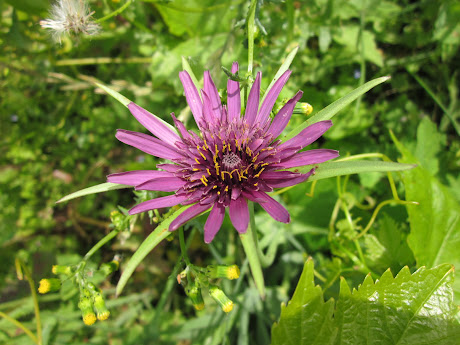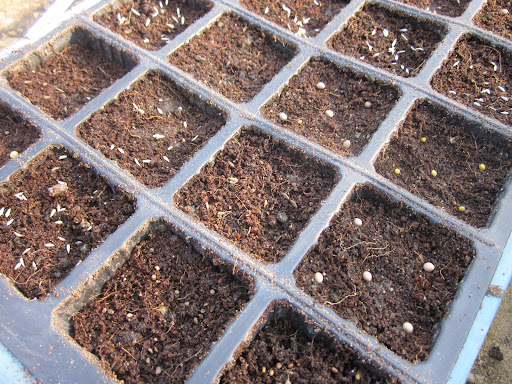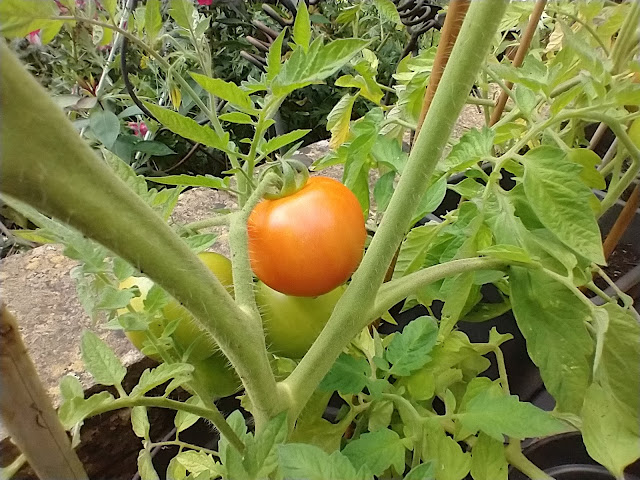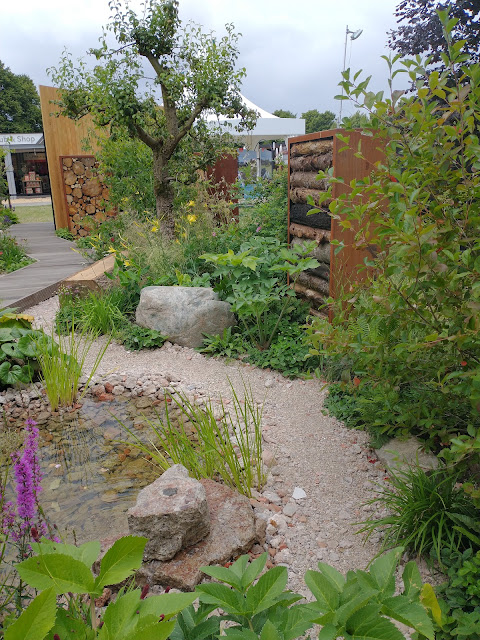GBBD: Garlic Mustard
 |
| Garlic mustard (centre and right), showing leaves, flowers and seed pods |
One of the featured weeds was garlic mustard, which I've since found has taken up residence in a couple of shady spots in our front side garden. Its flowers show it's one of the brassica family and its leaves are a simpler form of the oriental mustards I grow for salad.
This is usually more of a plant to feature for May's Blooms Day, but our cooler weather this year means it's hung on into June.
First taste is of garlic and then the mustard kicks in. If you use it in salads, pick absolutely fresh as it wilts very quickly. It's a good candidate for my Universal Pesto recipe. Those seed pods pack quite a fiery punch and deserve to be made into a mayonnaise, so this weed doesn't spread too far in the garden.
American readers in particular should take note as this plant is a notorious invasive. This website says the plant "exudes antifungal chemicals into the soil that disrupt associations between mycorrhizal fungi and native plants, suppressing native plant growth". In botany, this is known as allelopathy.
Garden Bloggers Blooms Day is hosted by Carol at May Dreams Gardens.
* = the cocktail she made with gin, fizzy water and lilac syrup was a revelation
** = I'm pleased to say my constant vigilance is working
Update 21st June: I'm just back from a fab holiday and this year's Garden Bloggers Fling in Canada. Whilst there we visited High Park in Toronto to learn about the restoration of the native black oak habitat. They have a huge problem with invasive garlic mustard so be warned! Their solution is to weed it out rather than eat it, and it's an ongoing task usually undertaken by their volunteers.
It looks like I have another weed which deserves constant vigilance combined with a spot of home foraging...
------------------------------------------------------------------------------------------------------------------------
Latin without tears
Garlic mustard is native to Europe (including Britain), western and central Asia, and northwestern Africa and has the Latin name Alliaria petiolata. According to Wikipedia, Alliaria means 'resembling allium', which probably refers to the initial garlic-like odour and taste when the leaves are crushed.
I've found 2 versions of petiolata: the RHS's Latin for Gardeners says 'with a leaf stalk', whereas my Plant Names Explained goes a bit further and says 'with a (long) leaf stalk (petiole)'.










Now that sounds a rather interesting nibble VP and one that I could be tempted by. I would have to turn my nose up at hairy bittercress though.
ReplyDeleteHi Anna, it's not unlike the oriental mustards we know and love already, so if you like garlic as well and love getting revenge on your garden weeds, here's a healthy way of getting rid of one of them!
DeleteGarlic mustard has to move up on the pull it if you see it list! I got rid of ragweed that way but it took years. We can't have Ed's trailing arbutus at risk!
ReplyDeleteYes Becky, I quickly learned from the reaction of my fellow Flingers how much of a problem this weed is in the States! It's on my to do list now I'm home, along with some pesto making for the freezer with the results.
DeleteFascinating post - I wondered what the problem was with garlic mustard, because it's so easy to pull out. I get the odd bit in my garden, but compared to some of the other thugs I have to contend with, it seems pretty innocuous. Now I know!
ReplyDelete